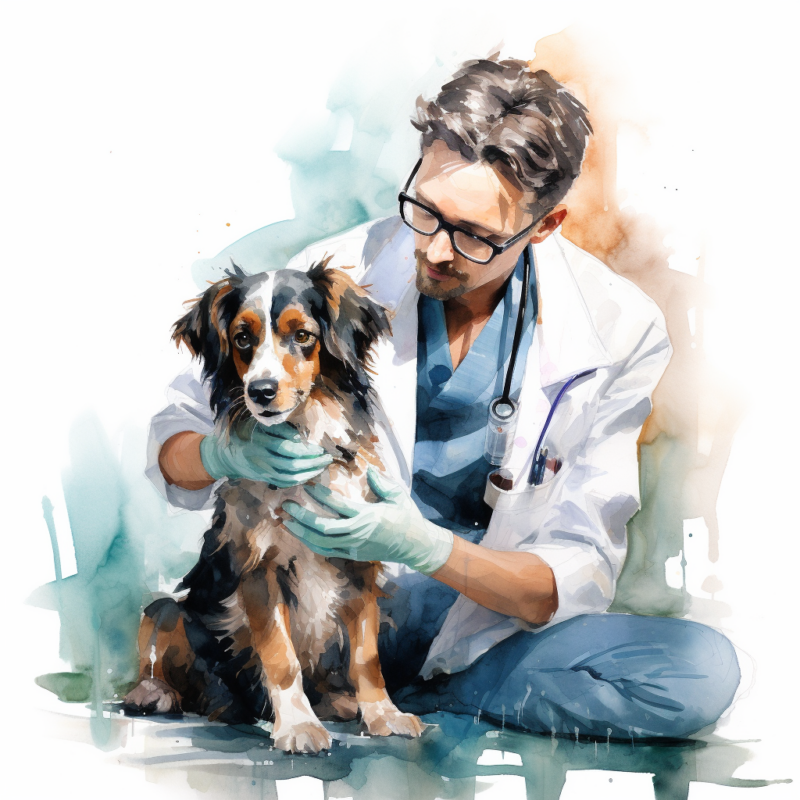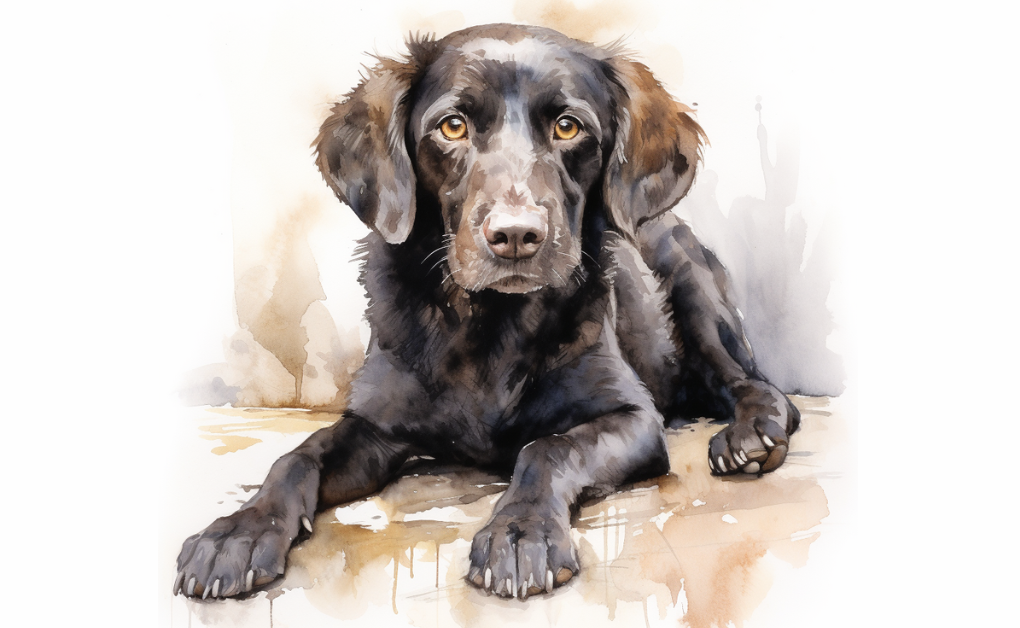What is Conjunctivitis in Dogs?
What is it?
How is it Treated?
Breed Predispositions
Snubbed-nose breeds (brachycephalic breeds) and Cocker spaniels, Poodles, Lhasa Apsos, Shar Pei, St. Bernards, and Bloodhounds
Introduction
Oliver had always taken pride in caring for his loyal Dachshund, Daisy, ensuring she was happy and healthy. One morning, however, he noticed that Daisy’s eyes were red and swollen, with a thick discharge accumulating in the corners. Worried about his beloved pet’s sudden change in appearance, Oliver took Daisy to the veterinarian for a thorough evaluation. The vet diagnosed Daisy with conjunctivitis, a common but treatable eye condition in dogs.
Conjunctivitis, also known as “pink eye in dogs,” is a condition where the thin mucous membrane, known as the conjunctiva, that lines the interior surface of the eyelid and the white part of the eye experiences inflammation. This eye issue is a prevalent eye infection in dogs, potentially affecting one eye or both, and the severity can vary. Although addressing the root causes, symptoms, preventative strategies, and treatments is crucial, the primary focus here is on the condition. Comprehending that conjunctivitis signifies inflammation of the conjunctiva in dogs enables pet owners to pay keen attention to their dog’s eye health, specifically watching out for signs such as eye discharge. They can then promptly seek veterinary care when required, especially if there are abnormalities in the tear duct.
Types of Conjunctivitis in Dogs
Allergic Conjunctivitis
Allergic conjunctivitis in dogs is a type of eye inflammation primarily driven by an allergic response. Like humans, dogs can be sensitive to environmental allergens, such as dust mites, pollen, molds, and certain foods. When a dog with this sensitivity encounters these allergens, the immune system overreacts, leading to inflammation of the conjunctiva, which is the mucous membrane that covers the front of the eye and lines the inside of the eyelids. This inflammation can cause discomfort and affect the dog’s vision if not appropriately managed.
Bacterial Conjunctivitis
Bacterial conjunctivitis in dogs is when the conjunctiva, the mucous membrane covering the front of the eye and lining the inside of the eyelids, becomes inflamed due to a bacterial infection. Various types of bacteria can be responsible for this infection, leading to discomfort and potential complications if left unaddressed. This condition can affect one or both eyes and while it can occur independently, it often occurs secondary to other underlying health issues or eye disorders. The severity and course of the infection can vary widely depending on the causative bacteria and the dog’s general health.
Viral Conjunctivitis
Viral conjunctivitis in dogs is an inflammation of the conjunctiva caused by a viral infection. This condition impacts the transparent layer covering the eyeball and inner eyelid, leading to discomfort and potential vision complications. It can affect one or both eyes and is frequently associated with systemic viral infections. The virus can vary, with the canine distemper virus being one common culprit. The course of the disease can differ based on the causative virus and the dog’s overall health, making it essential to seek veterinary care for a proper diagnosis and comprehensive care plan.
Causes of Conjunctivitis in Dogs
Several common causes can predispose a dog to develop conjunctivitis, an eye problem that includes:
- Keratoconjunctivitis Sicca (Dry Eye): This condition is characterized by the dog’s eyes not producing enough tear film, a vital factor for keeping eyes moist and clean from dust and other debris. Insufficient tear production can trigger irritation and inflammation of the conjunctiva.
- Abnormalities in Eyelid Structure (Entropion or Ectropion): In these conditions, the eyelid rolls inwards (entropion) or outwards (ectropion), creating abnormal contact with hair and lashes or excessive exposure, both of which irritate the conjunctiva.
- Unusual Eyelash Growth (Distichiasis and Trichiasis): These conditions involve aberrant growth of eyelashes, which, when rubbing against the conjunctiva, incite irritation and inflammation.
- Autoimmune Conditions: Certain autoimmune diseases, for instance, Systemic Lupus Erythematosus (SLE), may trigger inflammation in various body tissues, including the conjunctiva.
- Brachycephalic Syndrome: Breeds with short noses and flat faces (like Bulldogs, Pugs, etc.) often experience eye issues due to their unique facial structure and the position of their eyes. They are more prone to dryness and exposure, both of which can culminate in conjunctivitis.
- Persistent Allergies: Dogs suffering from chronic allergies might experience recurrent bouts of conjunctivitis.
- Viral Infections: Certain viral infections like canine distemper, adenovirus, and herpesvirus can give rise to infectious conjunctivitis.
The presence of a foreign body irritating your dog’s eye, such as dust or a tiny piece of wood, can also lead to conjunctivitis.
Although any dog can develop conjunctivitis, those with the above conditions face higher risks. Therefore, their owners should exercise extra caution to safeguard their pets’ eyes. Conditions such as corneal ulcers and follicular conjunctivitis are also often associated with conjunctivitis. Routine check-ups with a vet are advised for prompt detection and treatment of potential issues.
Symptoms of Canine Conjunctivitis
Clinical signs of conjunctivitis in dogs can fluctuate based on the root cause, but common symptoms often consist of:
- Inflamed or reddened conjunctiva
- Various types of eye discharge, ranging from clear or watery to yellow or green
- Frequent squinting or excessive blinking
- An inclination to rub or paw at the eye
- Increased sensitivity to light
- Swelling of the eyelids
- A bloodshot or cloudy look to the eye
- Crust or mucus accumulation around the eye region

A red eye is another telling sign that your dog has pink eye or conjunctivitis. It’s critical to seek veterinary consultation if you observe any of these symptoms in your pet, as neglecting them could lead to further eye damage. Conjunctivitis can stem from multiple causes, and the suitable treatment heavily depends on identifying the exact cause.
How Do Vets Diagnose Conjunctivitis?
Conjunctivitis in dogs, an uncomfortable eye condition, is diagnosed through a series of steps involving physical examination, an understanding of the dog’s medical history, and various diagnostic tests. Here’s how a vet typically proceeds to diagnose this condition:
Medical History
The vet will inquire about your dog’s symptoms, their onset and duration, and any past eye problems, recent injuries, or exposure to irritants or other animals.
Physical Examination
The vet extensively examines your dog’s eye, looking for indications of inflammation, discharge, swelling, and redness. They’ll also look out for injuries, foreign bodies, or underlying conditions that could lead to conjunctivitis.
Diagnostic Tests
Based on the conclusions drawn from the physical examination, the vet may administer one or several of the following diagnostic tests:
- Schirmer tear test: This examination measures tear production, helpful in detecting dry eye (keratoconjunctivitis sicca), a condition that can instigate conjunctivitis.
- Fluorescein staining: This procedure involves introducing a dye into the eye to detect corneal ulcers or scratches that might be causing conjunctivitis.
- Conjunctival swab or cytology: The vet might collect a sample of the discharge or cells from the conjunctiva for examination, checking for bacteria, viruses, or parasites, which aids in determining the appropriate treatment.
- Allergy testing: If an allergic response is suspected, the vet might run allergy tests to identify the specific allergen.
Upon completing these tests and identifying the root cause of your dog’s conjunctivitis, the vet will formulate a treatment strategy to meet your dog’s needs. This may incorporate antibiotics, antiviral medications, or other therapies to tackle the underlying issue and ease the symptoms of conjunctivitis. Remember that the precise treatment for your dog’s conjunctivitis will depend upon the diagnosis, and early detection is critical to avoiding potential permanent eye damage.
Treatment Options for Conjunctivitis in Dogs
In addressing conjunctivitis in dogs, veterinarians aim to identify the root cause and assess the condition’s severity to recommend the best treatment. Here are some commonly prescribed medicines and their respective applications:
Antibiotic Eye Drops or Ointments
Depending on the bacterial strain responsible for the infection, the vet may suggest a particular antibiotic eye drop or ointment. Antibiotics often treat this condition when a bacterial infection has caused it. Adherence to the vet’s instructions for application and treatment duration is critical to eradicating the infection. Throughout the treatment, it’s essential to keep a close eye on your dog’s condition for any improvement, and any deterioration in symptoms should be immediately communicated to the vet.
- Types of conjunctivitis treated: Bacterial conjunctivitis
Antiviral Medications
If a viral infection is suspected, the vet might prescribe antiviral therapies, such as eye drops, ointments, or oral medication. These aim to tackle the virus directly, reducing its concentration and relieving conjunctivitis symptoms.
- Types of conjunctivitis treated: Viral conjunctivitis.

Anti-inflammatory Medications
Anti-inflammatory medications are crucial in easing the redness, swelling, and discomfort associated with conjunctivitis. Depending on the severity and cause of conjunctivitis, these can be prescribed as eye drops, ointments, or oral medications. Vets may administer these alone or alongside other treatments, such as antibiotics or antiviral drugs, to address the inflammation’s root cause.
When treating conjunctivitis in dogs, veterinarians may use anti-inflammatory medications alone or in combination with other treatments, such as antibiotics or antiviral medications, to address the underlying cause of the inflammation.
- Types of conjunctivitis treated: Allergic conjunctivitis, other cases with inflammation
Artificial Tears or Lubricating Eye Drops
These sterile solutions bring relief and comfort to dry, inflamed, or irritated eyes, emulating the natural tears produced by the eye. In addition, they ensure the eye remains moist and lubricated. For dogs with conjunctivitis, these drops, along with the primary treatment (like antibiotics or anti-inflammatory drugs), provide comfort by soothing the irritated eye, reducing discomfort, and aiding the healing process. They also help rinse away irritants, allergens, or debris contributing to inflammation.
- Types of conjunctivitis treated: Irritant-induced conjunctivitis, foreign body-induced conjunctivitis
Antifungal Medications
- These are drugs that hinder fungal growth or eradicate them outright. Depending on the specific infection and its severity, these can be prescribed as eye drops, ointments, or oral medications. Antifungal medications work to eradicate the fungus causing inflammation in dogs with conjunctivitis instigated by a fungal infection. The vet will typically recommend a specific antifungal treatment based on the type of fungus identified via diagnostic tests. Types of conjunctivitis treated: Fungal conjunctivitis
It is essential to consult with a veterinarian to determine the appropriate treatment for each dog’s specific conjunctivitis condition. The treatment plan may involve one or more of the abovementioned treatments, depending on the severity and underlying cause.
Prevention and Management of Conjunctivitis Diseases
Preventing conjunctivitis and facilitating its recovery in dogs necessitates managing the root causes, executing suitable treatment, and adopting preventive strategies to minimize the chances of a relapse. Below are some steps that can be taken to avert and ensure proper recovery from conjunctivitis, an uncomfortable eye condition, in dogs:
- Adherence to Vet’s Treatment Plan: Consistently follow your vet’s medication regimen and treatment plan. This plan may include antibiotics, antiviral drugs, or anti-inflammatory eye drops. It’s essential to continue the treatment until the end, even if your dog’s symptoms improve before the medication runs out.
- Maintain Cleanliness around the Eye Area: Use a soft, damp cloth or cotton ball to gently clean the area surrounding your dog’s eyes, removing any discharge or debris. Use a different cloth for each eye to avoid spreading the infection.
- Safeguard Your Dog’s Eyes: Protect your dog from environmental irritants like dust, smoke, and chemical fumes. For example, an Elizabethan collar or protective cone might be helpful to stop your dog from rubbing or scratching its eyes during recovery, preventing potential permanent eye damage.
- Schedule Regular Check-ups: Regular veterinary visits are crucial to monitor your dog’s eye health and confirm complete recovery from conjunctivitis.
- Manage Underlying Health Conditions: If allergies or immune-mediated disorders are causing your dog’s conjunctivitis, it’s essential to collaborate with your vet to control these issues. In addition, this strategy can diminish the likelihood of future eye infections.
- Implement Parasite Prevention: Uphold a consistent parasite prevention routine to safeguard your dog from fleas, ticks, and mites, which could cause eye irritation and conjunctivitis.
- Ensure Up-to-date Vaccinations: Keeping your dog’s vaccinations current can lower the risk of viral infections, a potential cause of conjunctivitis.
By following these preventive steps and maintaining close communication with your veterinarian, you can assist your dog in recovering from conjunctivitis while reducing the chance of future eye infections.
Frequently Asked Questions
Disclaimer: The information provided on this veterinary website is intended for general educational purposes only and should not be considered as a substitute for professional veterinary advice, diagnosis, or treatment. Always consult a licensed veterinarian for any concerns or questions regarding the health and well-being of your pet. This website does not claim to cover every possible situation or provide exhaustive knowledge on the subjects presented. The owners and contributors of this website are not responsible for any harm or loss that may result from the use or misuse of the information provided herein.







